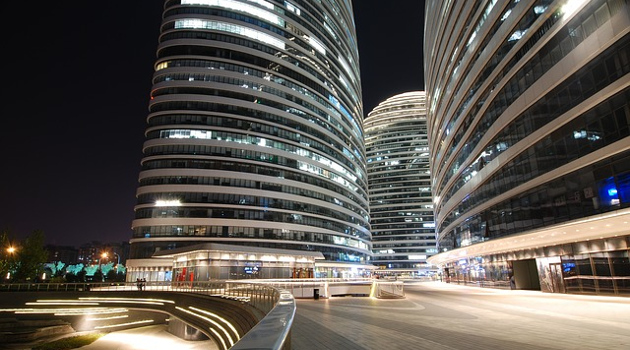I’ve applauded China’s economic progress.
It’s economic liberty score jumped from 3.64 in 1980 to 6.46 in the most recent edition of Economic Freedom of the World.
 That shift toward markets (which started in a village) helped to dramatically reduce poverty and turn China into a middle-income nation.
That shift toward markets (which started in a village) helped to dramatically reduce poverty and turn China into a middle-income nation.
That’s the good news.
The bad news is that most of China’s economic liberalization (from 3.64 to 6.15) occurred between 1980 and 2003.
Since that time, China’s score has improved at a glacial pace. Moreover, because other nations have been more aggressive about reducing the burden of government, China’s relative ranking has actually dropped (from #88 to #107) since 2003.
Which is why I’ve warned that China needs another burst of pro-market reform if it wants to become a rich country.
Regarding this issue, the Wall Street Journal has a very interesting report about how China is under-performing.
The country’s state-led growth model is running out of gas. A recession or crisis may not be imminent, but the long-run implications are just as serious. Absent a change in direction,
China may never become rich. …First, official statistics probably paint too flattering a picture. Per-capita income may be a quarter lower than reported, based on a study of nighttime light co-authored by Yingyao Hu of Johns Hopkins University. …Second, it doesn’t measure up to the economies China seeks to emulate. Taiwan, South Korea and Japan all opened their economies to global trade and investment, enjoyed superfast growth for several decades… In fact, China seems to be slowing sooner than the others.
Why is China underperforming?
Too much statism. Simply stated, the government has too much control over the allocation of labor and capital.
For 30 years the Communist Party opened ever more of the economy to private enterprise, trade, foreign investment and market forces. Yet it never relinquished its commitment to socialism and
Mr. Brandt says that since the mid-2000s the government has tightened control over sectors… An inefficient state sector matters less if the private sector grows fast enough. But in recent years, private firms in China have faced multiple headwinds. State-controlled banks prefer to lend to state-owned enterprises… The domestic private sector’s share of total sales has dropped about 5 percentage points since 2016, according to Goldman, while the state sector’s share has risen roughly as much.
By the way, many observers (from the American Enterprise Institute, Peterson Institute for International Economics, the New York Times, the New York Post, and Investor’s Business Daily) echo the concern about China becoming more statist in recent years.
I’ll make a more restrained point.
I’ll start by sharing this very interesting chart from the WSJ story. It shows how China’s growth, while impressive, has not been as rapid as the growth enjoyed by other Asian economies.
If you look below, you’ll see I’ve now augmented the chart to explain why China has under-performed.
On the right side, I’ve added the historical rankings from Economic Freedom of the World. As you can see (and just as theory and evidence teaches us), the other nations on the chart enjoyed more growth because they had more economic freedom.
These numbers reinforce my argument that China needs more pro-market reform. Though I should add the caveat that EFW has added more nations over time, so this comparison overstates the degree to which China is lagging.
But it is lagging. The bottom line is that China needs to copy Hong Kong and Singapore if it wants to become a rich nation. Or even Taiwan, which is an under-appreciated success story.
P.S. Keep in mind that China also faces demographic decline, which makes good policy even more necessary and important.
P.P.S. Amazingly, both the OECD and IMF are trying to sabotage China’s economy.
P.P.P.S. The WSJ story is an example of good reporting. If you want an example of bad reporting about China, check out this bizarre story from the New York Times.
———
Image credit: wuwow | Pixabay License.



